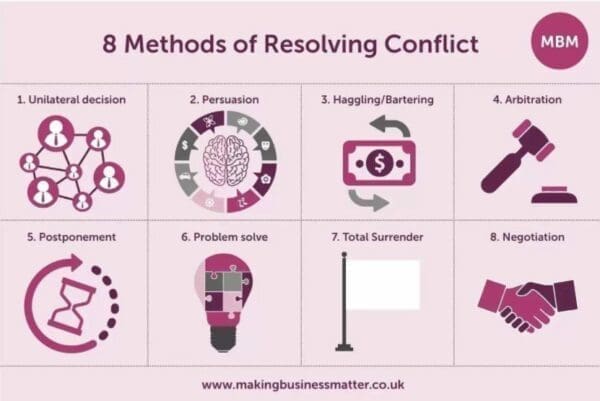Putting the ‘Us’ Back into Business
After two years of pandemic challenges and ongoing uncertainty, the need for affiliative leadership has never been greater. Time’s up for rigid authoritative leadership and task-based, transactional management. Smart leaders appreciate they must still lead, but be situational, navigating change and flexing as circumstances require.
Embracing affiliative leadership helps bring your people with you more readily and build better relationships. It’s wrapped up with bonding, and part of being human. We all have a need for connection.
First identified by Daniel Goleman and colleagues, affiliative leadership features in many effective leaders’ and managers’ toolkits. People don’t talk about it much. But don’t let stop you from using affiliative leadership to become the best version of you!
Affiliative Leadership is Part of Being Human
What Does Affiliative Mean?
The Merriam-Webster Online Dictionary sums it up neatly. ‘Affiliative’ relates to the formation of social and emotional bonds with others, and the desire to create such bonds.
There’s clear evidence from neuroscience about how affiliative bonding powers our behaviour. There’s a powerful hormone called oxytocin, which is associated with our affiliative impulses. Produced in the brain, it initiates birth contractions and milk release.
Hugging and cuddling also produce oxytocin, as does falling in love. It’s also thought to be associated with social cognition and bonding, from parent/child attachment to group attitudes and prejudice. For all our cleverness, we’re just evolved mammals, after all!
So What Exactly is Affiliative Leadership?

Affiliative leadership means putting people first. It focuses on creating harmonious working environments and building emotional bonds. Affiliative leaders have empathy for their colleagues, teams, and business partners, and build relationships by flexing their communication styles.
True affiliative leadership inspires fierce loyalty. It fosters communication and flexibility and results in high levels of trust. Motivating your team like this comes naturally to some leaders, particularly in times like these. But beware.
You may promote harmony and heal rifts in your team, but then may find you need to improve poor performance. In which case, of course, you need to remember you’re still in charge and be authoritative as the situation requires.
Sticky Learning ® is 7 times more effective than 1-day training courses. Plus, you will get a Chain of Evidence proving your Return on Investment. Discover soft skills training that changes behaviours long term.

Leading by Example
A perfect example is reaching out to colleagues that seem to need help before they request it. Proactively helping people underlines that as a leader, you understand about, and are actively interested in, your team’s wellbeing. And it sets the benchmark for the others to follow.
Taking this stance definitely pays off. At the moment, businesses of all sizes are finding it hard to recruit and keep good people. In a 2014 US Career Builder Survey, 54% of the poll stayed in their jobs because they liked their colleagues. And 32% stayed because their boss looked out for them.
Making the Business Case for Affiliative Leadership
Is Affiliative Leadership Effective?
Of the different leadership styles, Daniel Goleman identified, affiliative leadership is the one most conducive to better workplace communication. This makes it particularly effective in times of stress and uncertainty. And leading by example delivers results when the team isn’t getting along well.
Where is Affiliative Leadership Used?
Affiliative leadership helps teams and businesses get through challenging times. Classically, this means mergers, cutbacks, or other transitional periods that impact employees’ wellbeing. And of course, that makes it extremely relevant to leaders wanting to make their businesses resilient in the pandemic.

3 Hallmarks of an Affiliative Leader
- Calm and focused strategic thinking.
- Able to learn from the past.
- Good at connecting with their people.
What are the Main Benefits of Affiliative Leadership?
- Creates effective teams: Building unity in the workplace gives employees a feeling of safety and inclusiveness, enabling them to be their authentic selves. For the business, that helps boost staff retention and improves productivity and job satisfaction. You might still get that Great Places to Work certification!
- Increases morale: Affiliative leadership motivates your people, by giving them more freedom to express opinions, feelings, and creative ideas. They feel valued and appreciated when they have autonomy and aren’t micromanaged. And that increases their desire to do well for you and contribute to the business’s success.
- Builds trust: When you take an interest in your people’s wellbeing, they open up to you more. They want to go the extra mile for you. Openness between bosses and teams is vital for building trust and making people feel free to speak up.
- Provides guidance in a crisis: Affiliative leadership lets workers take in what’s happening and work through their feelings while keeping the business going.
- Resolves conflicts more efficiently: By focusing on their emotions, leaders can read team members’ feelings, spot tensions, and find solutions early on. This also applies to noticing when individuals are being picked on and taking matters in hand.
- Reduces workplace stress: Employees with leaders who care about them are less likely to burn out and have greater job satisfaction. Affiliative leadership means working on making interactions positive and encouraging others to do the same. All of which reduces the stress from negative experiences.
Know the Pros and Cons
The first priority of affiliative leadership is ensuring harmony and friendship. This means happy employees. But there’s a downside. It can also lead to poor performance because individuals think mediocre or average is good enough. You still have to monitor individual output.
Also, by providing only positive feedback, you may unintentionally motivate your team in the wrong direction. That calls for constructive criticism. As we’ve said, you still need to be a leader. That means, focusing on the business, assessing the challenges, and addressing them effectively. But kindness helps!

If You Need Convincing… The Research Shows it Works
In the 1990s Daniel Goleman and his colleagues Annie McKee and Richard Boyatzis researched nearly 4,000 executives. They identified affiliative leadership as one of six leadership styles that motivated people and moved businesses forward. The others were:
- Authoritative: An authoritative leader charts a new course and sells their people on a long-term vision. But if they don’t take notice of their staff’s emotions, they can appear autocratic, pompous, or overbearing. And people disconnect.
- Coaching: This works well when colleagues know their limitations and are open to change. It’s also good if you need results quickly. But under serious pressure, this approach can seem painfully slow. You need to understand how your people feel about the coaching and respond accordingly.
- Democratic You have the final say, but can also count on your team’s input. Your people know they can influence the business. But when you need to step in, as a leader you still have the ultimate authority.
- Pacesetting: This style comes into its own when things are difficult, and can be really effective. But in your drive for results, poor communication can cause problems. And morale, flexibility, and responsibility can all suffer.
- Coercive: When the business is doing badly, you make, and follow through, tough decisions. You’re the boss, no argument! You kick start change and confront problem employees. But when things calm down, you need to listen more and revert to being more democratic.
Primal Leadership
Goleman, McKee and Boyatzis summarised this in their 2002 book, ‘Primal Leadership: Realizing the power of emotional intelligence.’ Primal Leadership concluded that the best leaders don’t stick to one leadership style. They’re skilled at several and can flex as circumstances change. It’s all about being in tune with your people and finding a balance.
Primal Leadership was published soon after 9/11. In the uncertain climate of those days, the message was that people looked to leaders for a sense of certainty. Or at the very least, show conviction. That message resonated with audiences then and still rings true today.
For best results, you should work on combining affiliative and authoritative leadership. To repeat, be the leader but stay in touch with your team. Have an open door. Walk the floor. And listen.
Affiliative Leadership is Something you can Count on
Getting your head around a complex topic like this, it can help to break the learnings into checklists. These lists overlap in places, but they reinforce the key points:

5 Signs of Affiliative Leadership in the Workplace
- Healing wounds left by bad leaders.
- Shifting your focus from getting results to getting along, and back again.
- Inspiring positivity and real trust.
- Setting up a system that delivers positive feedback.
- Having an open door and being attuned to people’s emotional needs.
6 Positive Characteristics of Affiliative Leadership:
- A strong sense of togetherness and equality.
- Openness to innovation and creativity.
- Ability to cultivate an atmosphere of trust.
- Capacity to give positive feedback.
- Ability to inspire open, positive communication.
- A natural sense of harmony.
7 Traits of Affiliative Leaders
- Focused on conflict resolution: make emotional needs a priority.
- Generous with praise.
- Adept at reading emotions and understanding individuals’ needs.
- Flexible about workplace culture and people’s working arrangements.
- Giving people the freedom to be creative, collaborative, and innovative.
- Resilience to stand the stress of times of change and handle the team’s emotional ups and downs.
- Empathy to focus on the positive and take employees’ feelings into account when giving feedback.
7 Ways to Develop Affiliative Leadership
- Work on your self-awareness.
- Notice how your leadership is being received: observe team members’ state of mind and their reactions.
- Understand when what people really need from you is direction.
- Watch out for when you achieve harmony at the expense of good work.
- Recognise when your team members’ emotional needs are being met, and you can switch to pushing for results.
- Look out for times when affiliative leadership is breeding complacency: are your team feeling secure, but they could do better?
- Remember, you may be popular being like this, but you also need to be a leader!
10 Characteristics of Affiliative Leadership
- Honesty.
- Ability to delegate.
- Communication.
- Sense of humour.
- Confidence.
- Commitment.
- Positive attitude.
- Creativity.
- Ability to inspire.
- Intuition.
Every quality in this last list is key to affiliative leadership. But in uncharted times as we face at the moment, the last characteristic, intuition, is particularly important.

With no knowledge of the territory, you need to trust your inner wisdom to give you insights. And you need to be self-aware about how you communicate these insights to your team.
I Want to be an AffiliativeLeader
As Daniel Goleman and colleagues’ research showed, leadership is a balancing act. Affiliative leadership helps you reach equilibrium about how you lead and make it work for you and the team. Here are some essentials to think about:
Take a Balanced Approach
Praise achievement when people do well but give constructive criticism to help them perform better. Striving for your goals at the same time as nurturing your team needs careful handling. You need to support them while pushing on to your objectives.
Help Your Team With Resolving Conflict
The less conflict in your team, the better results you’ll see. Conflict can be positively constructive, provided you address the issues so it results in what Stephen Covey calls “co-creation.” You need to empower your team to take responsibility for their conflicts as well.

As part of this, you can use conflict resolution activities to develop their skills in this area. This will help them solve internal problems among themselves, with you guiding as required. It’s likely that these activities and the discussions around them will flag up issues to do with your business. Again, you can use this to work through these concerns and build connections with your team and bring them together.
Keep Track of Performance
We mentioned before that affiliative leadership promotes harmony and healing rifts, but problems may arise in improving poor performance. You still need to watch productivity closely and keep track of individuals’ contributions. There’s no getting around needing to recognise potential issues, notice areas for improvement, and have strategies to make changes. But affiliative leadership helps you be firm about these essentials while building trust and creating a safe, positive work environment.
And Finally: Make Affiliative Leadership Part of your Business Toolkit
You can see how you’re progressing towards developing affiliative leadership with this checklist:
- Effective communication.
- Ability to motivate.
- Setting an example.
- Recognising when change is needed.
- Having a wide perspective.
- Encouraging cooperation.
- Sharing knowledge.

You’ll have noticed that these qualities are a step beyond the authoritative leadership and task-based, transactional management we mentioned at the start. Working on the qualities in this list will bring your team with you more readily and build better relationships. Doesn’t that feel better than bossing people about and micro-managing them?
Here’s the rub. The experts only name two 100% affiliative leaders. One was Joe Torre, a famous American baseball player turned team manager. He excelled at holding teams together and building a sense of harmony among his players.
Joe was renowned for making positive press statements and treating his players well. The other one is the Dalai Lama, who based his leadership around gaining love and support. This enabled him to successfully lead many believers, who believed in kindness to help them withstand the pressures from other people.
This shortage of famous examples might suggest affiliative leadership is something people strive for but never reach. Based on Daniel Goleman’s research, that’s clearly not the case. As mentioned at the start, it’s an element of many effective leaders’ and managers’ toolkits but isn’t often talked about. Now YOU know about affiliative leadership, use it to become the best version of you!
Action: For even more useful content on leadership, check out our ultimate guide on Leadership Skills.




